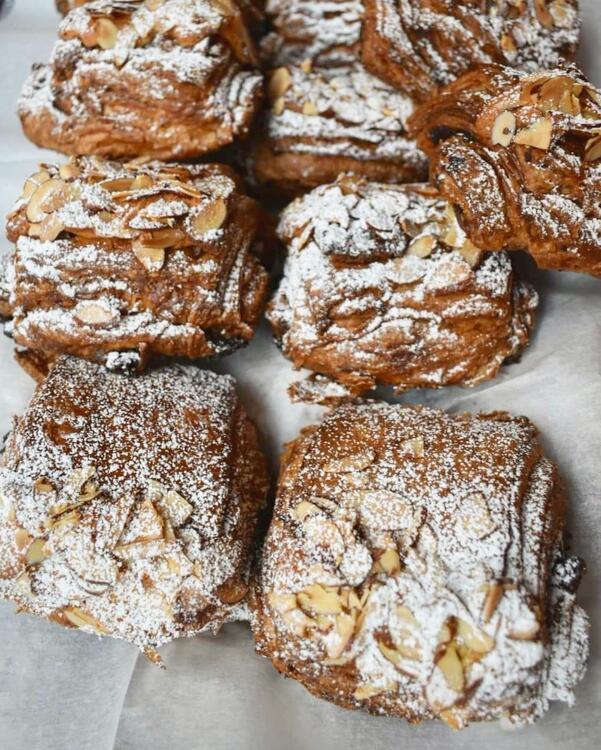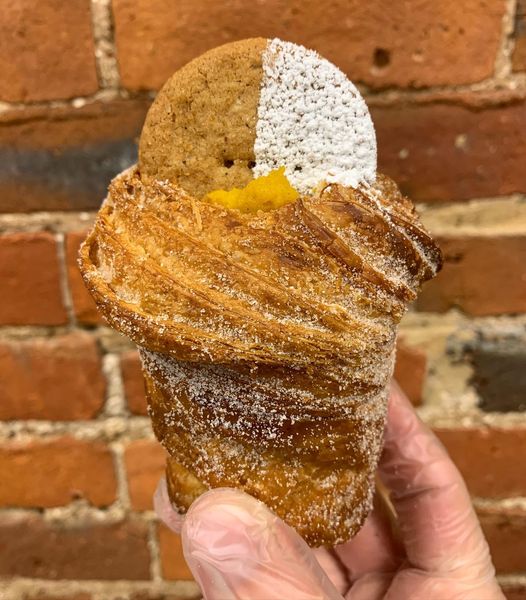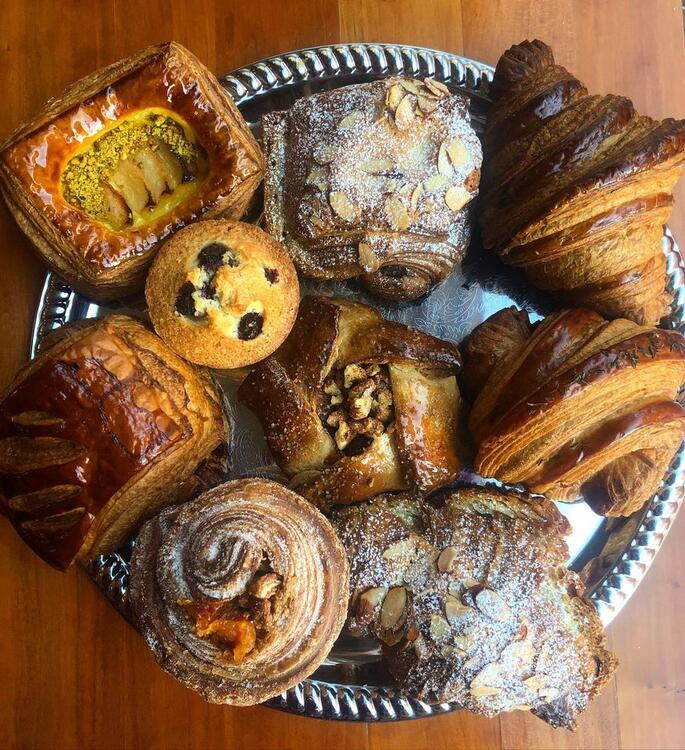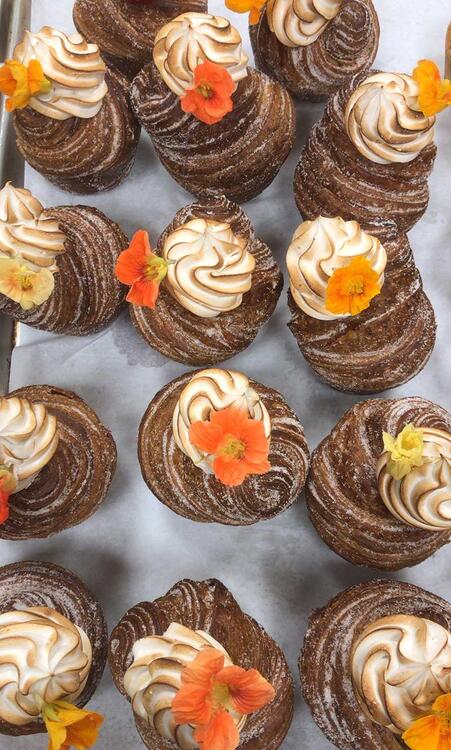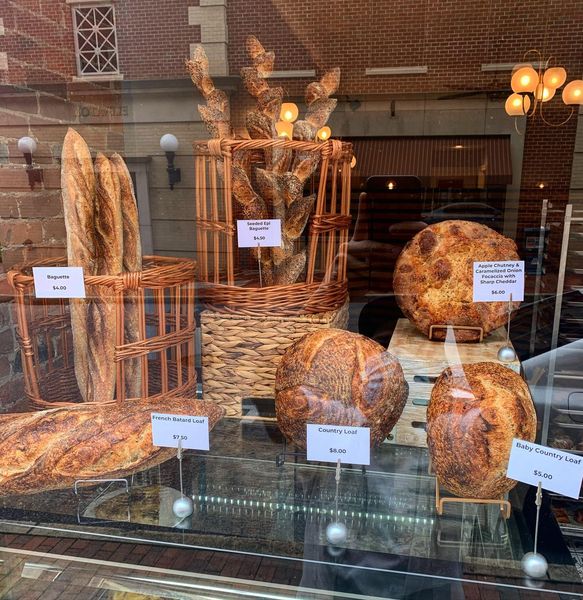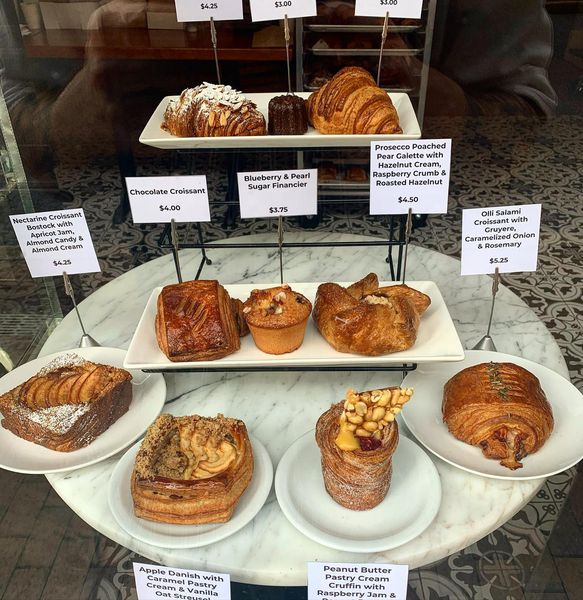-
Posts
2,411 -
Joined
-
Last visited
Content Type
Profiles
Forums
Store
Help Articles
Everything posted by Jim D.
-
I am interested in the opacity issue and the use of titanium. I use Chef Rubber's colors (already mixed). The Ruby Red lists titanium as an ingredient, but the color is not opaque. It turns into a muddy red brown when dark or milk chocolate are behind it. Is one to conclude that Chef Rubber did not intend for it to be opaque, and I am expected to spray a layer of white behind it, or is the issue that more titanium is needed? Kirsten Tibballs frequently calls for adding "titanium or white chocolate" to make colors opaque but doesn't mention proportions. Some CR colors similar to red (such as yellow and orange) are closer to opaque, and with those one can make do without the white layer. I was also interested in discovering last Christmas that, in the case of a transfer sheet from Chocotransfersheets.com containing green foliage and red berries, to my surprise the berries were closer to opaque. But after much experimentation, I have concluded that if you really want the color to be what it originally is from the bottle, a white layer is required. I am willing to try adding titanium to the CR colors but am not sure where to find it. Amazon lists some for soap-making. On a related issue, I know that many people are moving away from using titanium and that there are some manufacturers who are working on cocoa butter colors that don't use it but are opaque, but I'm not sure of the state of that research.
-
Yes, lucky...except that it is all too tempting. Before COVID it was a great place to linger, very tastefully decorated, very welcoming. It also specializes in espresso. At the beginning of the pandemic, the bakery offered delivery only, so people placed orders during the week, and on Saturday morning, they had pastries at their front door. I'm not sure how the owner made this work financially (distances were up to 35 miles), but he did. Now it's open on weekends with takeout only, and is flourishing. When I went downtown to deliver some of my chocolates to a shop nearby, the area in front of Réunion was like a parking lot and there was a line down the sidewalk from the bakery. We also have the historical backdrop--an old small Shenandoah Valley city with interesting downtown buildings preserved by law. It was a tourist draw until COVID, but people are working to keep it going for the future.
-
We are very fortunate to have a small bakery named Réunion in Staunton, Virginia. Owner Bryan Hollar produces an ever-increasing number of luscious items in a very small space. The quiche is the best I have ever eaten. The ever-popular almond croissant A pumpkin custard cruffin topped with a Speculoos cookie (a flavor combination that I am going to borrow for Christmas chocolates this year).
- 15 replies
-
- 12
-

-
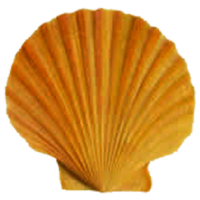
Spraying Chocolate: Equipment, Materials, and Techniques
Jim D. replied to a topic in Pastry & Baking
That is what pastrygirl wrote, no Grex GMAC between hose and airbrush. I wish the GMAC had an actual regulator that provided the psi being used. If I want to return to a setting that I liked, for example, for one of the more viscous cocoa butter colors, I can't do that. -

Spraying Chocolate: Equipment, Materials, and Techniques
Jim D. replied to a topic in Pastry & Baking
@Kerry Beal, from a PM I learned that she regulates the pressure at the compressor, no regulator at the airbrush end. I can't begin to count all the times I have tried with my Grex (same nozzle size). Maybe the cocoa butter is different--I'm grasping at straws here. -
Or perhaps a blunt "Eat chocolate, drink, and be merry, for tomorrow you [may] die"?
-

Making chocolate bars - type of chocolate to use and inclusions
Jim D. replied to a topic in Pastry & Baking
I have tasted Sao Palme (I think I got it from you, actually). I don't think it has quite the complexity of flavor as Maracaibo does. AUI now has a discount on 6kg boxes of Maracaibo (not, alas, on the Maracaibo Créole milk, which you also introduced me to). -

Making chocolate bars - type of chocolate to use and inclusions
Jim D. replied to a topic in Pastry & Baking
@Emily440, I completed the VDACS (Dept. of Agriculture) application, paid the $30 fee, and submitted the recipes. After a while an inspector came and took a look. I think much depends on your inspector. My experience has been that they see the visit as an educational opportunity more than seeing whether your kitchen measures up. You need to be familiar with the VDACS rules, especially on sanitation, before the visit. I showed the inspector a box of my chocolates. He wanted to see the ingredient list--that's a big thing, especially including the allergens (food allergies are very "in" these days). One mistake I made and will warn you about: Don't offer him or her a taste! He said he wasn't allowed to take anything from inspectees, not even a bottle of water, had I offered it. If you change your recipes or add new ones, you are supposed to submit those. So far he has come an average of once every 1.5 years. It isn't (at least in my experience) a surprise visit; an appointment is made. The visits have varied in nature, with different issues highlighted each time. A thermometer in the fridge is a must, it turns out. The fee is $30 per year, whether you are inspected that year or not. That's a very low fee, I would say. I can tell you more if you want, so don't hesitate to ask. I have never tasted TCHO, not sure offhand where I could obtain some. I will be glad to make an exception and send you some chocolates if you like. I don't do it routinely because I am a one-person operation and adding the protective packaging inside the box plus getting the boxes to USPS is just too much to do very often. The best thing that has happened so far is getting the chocolates on the menu of one of Staunton's two best restaurants. -

Making chocolate bars - type of chocolate to use and inclusions
Jim D. replied to a topic in Pastry & Baking
I too live in Virginia, though mercifully far away from the Northern Va. chaos (and expense). Are you making your product in your home kitchen now? I do that but have it inspected by the Department of Agriculture so that I can sell wholesale and online (if I wanted to) as well as retail. At some point you might want to look into the products offered by AUI (Albert Uster). They are located in Maryland, and I get delivery in one day. They are exclusive sellers of Felchlin chocolate, which both pastrygirl and I use a lot. I have never tasted a couverture better than their Maracaibo Clasificado dark. Friends here sometimes take my chocolates to relatives who live in your area and bring me back samples of the bonbons being sold in the Arlington and Alexandria area--Fleurir is one example, Blüprint another (clever name, but they are now closed). They are quite expensive and (in the case of Fleurir), packaged spectacularly well. They will be your competition, but from my experience--and not to sound overly critical--there is still room for you. -
@teonzo, as usual you are "spot on." And some of your insights I had not thought about in any depth, such as the fact that most artisan bonbons are bought as gifts. I do try to counteract the fact that the gift-giver will not tell the recipient how to store the chocolates by including, on the enclosed list of flavors, a sentence saying basically "keep them cool and eat them within two weeks." But, as I have written previously, I have absolutely no control over what the recipient does, and there is always my sobering example of people who stretch their consumption of a box from Christmas to Easter. Sometimes I get honest feedback about the chocolates from customers, but I live in a part of the world where people tend to be polite at all costs, and if they know me personally, they will not often say anything negative. Except, maybe, for my sister! Basically someone who purchases artisan bonbons is trusting the chocolatier's taste--at least for the first purchase!
-
I agree with Kerry about Greweling's recipes. He is widely considered THE expert and his book THE bible, but his recipes are on the conservative side. I had not actually realized it, but he suggests almost no colored decorations of his chocolates. This was corroborated recently when I watched his interview with Brian of Tomric and learned that my impressions are no accident--he does not actually like the more "out there" American style of chocolatiering. I read every recipe in Fine Chocolates Gold this past summer and found some I wanted to make. Wybauw has more unusual flavor pairings (kalamansi and rhubarb, for example--one that I denigrated on this forum and was promptly taken to task for questioning the recipe). But neither of them (IMHO) is as bold as Ewald Notter, who offers lots of decoration ideas, uses colors, and has more striking flavors. From a trip she took, my sister brought me some chocolates from various European shops, and they were great in texture, had very predictable flavors--and no decoration beyond the occasional swirl of chocolate or a hazelnut. It seems to me that Instagram has become the place to see what chocolatiers are up to these days--daring flavor combinations, previously unthought-of fillings (marshmallow, cookie inclusions, pâte de fruit, gianduja made of ingredients that would make a traditional European chocolatier faint), and colors that dazzle the eye. Stars like Melissa Coppel, Dallas Southcott and others at the Chocolate Lab in Calgary, Kate Weiser, Luis Amado, Susanna Yoon, Andrey Dubovik, Norman Love (widely credited with coming up with the idea of using colored cocoa butter), etc., have taken bonbons to a new level. Whether one likes that level or not is a matter of taste.
-
A few things I learned in my long packaging search: Early on I decided I wanted trays to hold the chocolates rather than putting them in individual cups. Trays speed up the boxing process so much that I think of them as a necessity. But trays also carry huge restrictions: You have to find ones into which your chocolates will fit, and although there are many, many trays available (mostly sourced from Mod-pak), I was surprised at how restrictive they are. If you make small bonbons, you will be fine with what's available, but if, like me, you make larger pieces, problems ensue. Speaking from experience, I can say that custom trays are very, very expensive, and finding a company that makes them in relatively small amounts is daunting. These manufacturers are used to making 10,000, maybe 50,000 trays at a time for grocery businesses and usually can't be bothered with a boutique business. And then there are boxes. Again, if you make small bonbons, you have lots of choices, but obviously, if you use trays, the boxes need to fit the trays. But the height of bonbons is something I didn't think of at first. I need boxes that are 1.5" high, and very few of those exist (that I could find, at least). So I had to go with custom boxes. I like them very much, and I finally found a reliable company that would make them in lots of 500. But they equal (at least) the cost of making the chocolates themselves.
-
Since you used Greweling's recipe, those of us who know his recipe have a point of reference. I found the amount of lavender he calls for insufficient and added more for my revision of his recipe. But in the case of lavender, I think the flavor of the flowers is the key, and not only does that vary from one producer to another, but it also varies over time. I bought my lavender buds from a local lavender farm (yes, there is such a thing), and I noticed the last time I made lavender ganache, their flavor was much more muted (they had a taste closer to dried grass than to what I imagine lavender should taste like). I realize this is no huge insight--it happens to every spice/flavoring that comes in dry form. The spice producers take advantage of that fact by scaring people into throwing out the contents of their spice rack every year or so. But some dry flavors fade more than others; I find ginger fades quickly. I don't think there is any foolproof way of judging what a ganache will taste like over time--except Teo's method. I believe that liquid forms of flavoring are more reliable. I use peppermint oil for my mint ganache, and it tastes about the same every time I make it. I use rosewater in Shotts's "raspberry rose" ganache, and it also tastes approximately the same each time (and I might add that my bottle of rosewater is so old that I will not confess how long I have had it--and I detect no difference over the years). I agree with Teo that Americans tend to like bolder flavors. And since my audience is American, I want people to taste what flavors the bonbon has. I have one customer who steadfastly refuses to look at the printed guide to the fillings until after he has tasted the chocolates and guessed what the flavors are. Now that's a challenge to the chocolatier.
-
I use this one from Lowe's, but anything similar will work.
-
And I think that European (or non-American at least) cachet accounts for some of it. "Valrhona" is the word that catches people's eye, even if they don't know much about chocolate. And the Valrhona corporation long ago realized this and priced their product accordingly. I have had some Valrhona products that I thought tasted mediocre at best (Satilia being one). It would be interesting to do a blind tasting of the best of Valrhona and the best of Guittard and see what happens. Once I tried to talk Chocosphere into packaging small amounts of lots of different chocolates for this purpose, but I guess this would not be profitable enough.
-
Yes, if it's not too much trouble, I would like the name of someone in the east.
-
Are you referring to a company in Brooklyn?
-
Thanks for the info on the Valrhona sale. Even though the site states that the free shipping option is not applicable to chocolate, that's still a good price, and they currently have a 30% off offer with no minimum.
-
An amateur? From your posts, I think you may well have passed that designation long ago. I had thought you were near opening a shop. But, aside from that, your $80 for 3 kilos of Opalys is a good price--it's usually in the $90+ category at retail. But Chocosphere does offer wholesale accounts, and the Opalys price is approximately $72. The only catch is that your order must total at least $250 (excluding shipping), so that means I have to order 4 bags of Opalys at a time (unless I'm getting something else). I use Felchlin for dark and milk, which no one is allowed to sell aside from AUI (big mistake on Felchlin's part, I think, but no one asked me), so I can't order those from Chocosphere. Unfortunately I live a long way from Oregon, so shipping is substantial. I asked Pastry Depot (in Atlanta) about ordering Opalys in quantity, and the price they offered was well above Chocosphere's. Could I ask where you get your Opalys at the price you mentioned?
-

EZtemper - The Help You Need to Achieve Perfectly Tempered Chocolate FAST!
Jim D. replied to a topic in Pastry & Baking
I will certainly watch, but I do hope Brian lets YOU talk. -
@Vip89, you can definitely use the FoodSaver to seal the chocolates against humidity, but if you are making filled chocolates (bonbons), you must stop the machine before the vacuum action starts, or it will suck out the insides of the bonbon. I speak from authoritative experience! It was not a pretty picture. But this does nothing for temperature, the other thing that must be avoided with chocolate (besides humidity). With the chocolate sealed, however, you can safely put it in a refrigerator. For longer storage, you can go further and freeze it without ill effect.
-
A supplementary idea is to purchase an impulse sealer and some plastic bags (I get the kind used for sous vide) and seal the chocolates in those to keep out humidity. I use that method for the chocolates that I sell wholesale to shops that have refrigeration available.
-
Those are gorgeous bonbons, very interesting techniques and beautiful blending of colors. And the flavors sound very interesting.
-
That comment about your fir tree bonbon reminded me of something I always think of when I use yuzu. I've not seen anyone mention it, so it may be just my imagination, but I think yuzu has a bit of evergreen flavor, and inevitably it comes to mind when I am planning Christmas assortments.
-
@Muscadelle, you might want to get in contact with @gfron1, who is an accomplished forager and indeed makes his living, one might say, doing so. He has a highly rated restaurant in St. Louis named Bulrush and makes stunning chocolates besides. Perhaps you have already seen his work in this forum.


